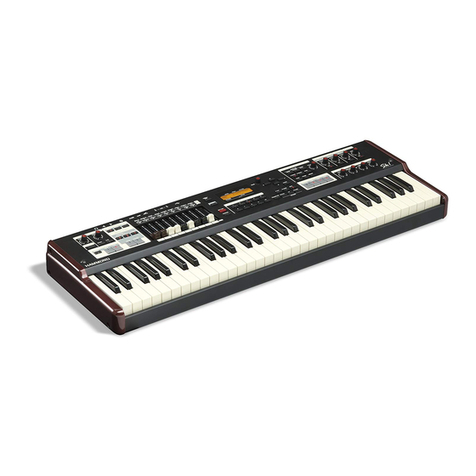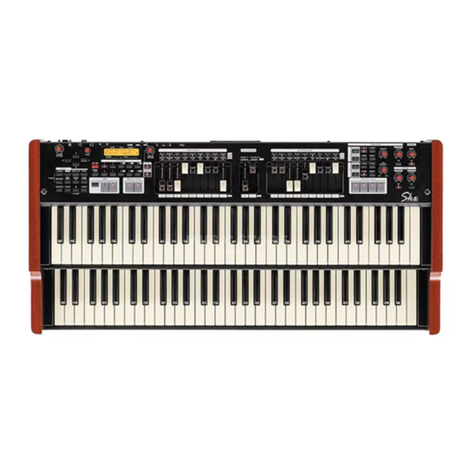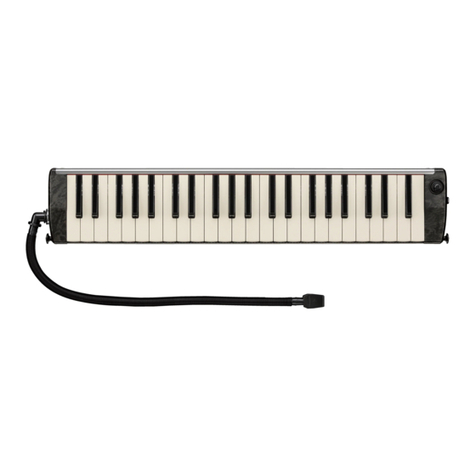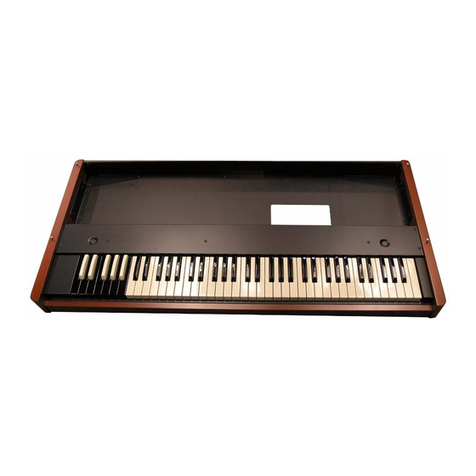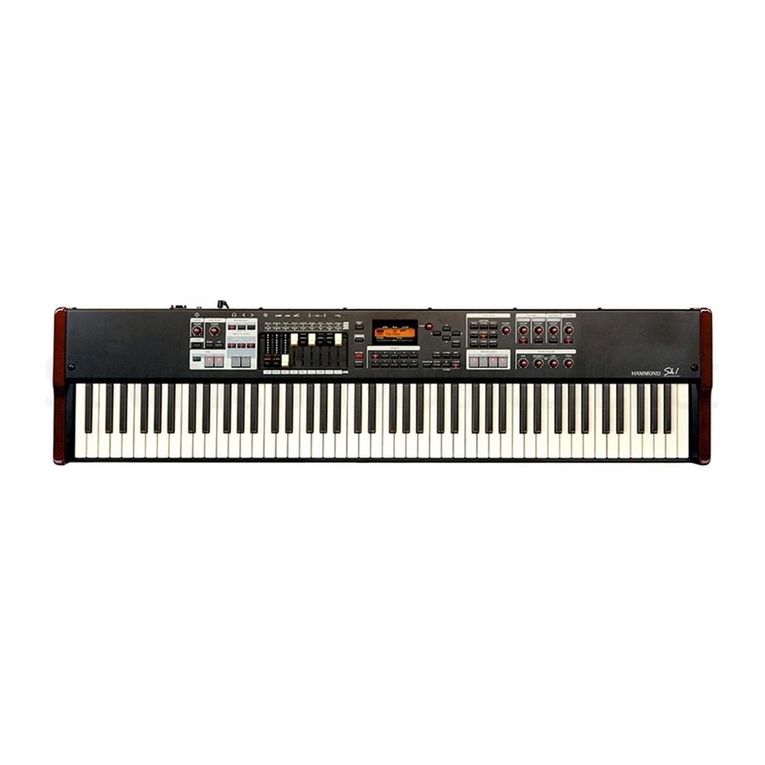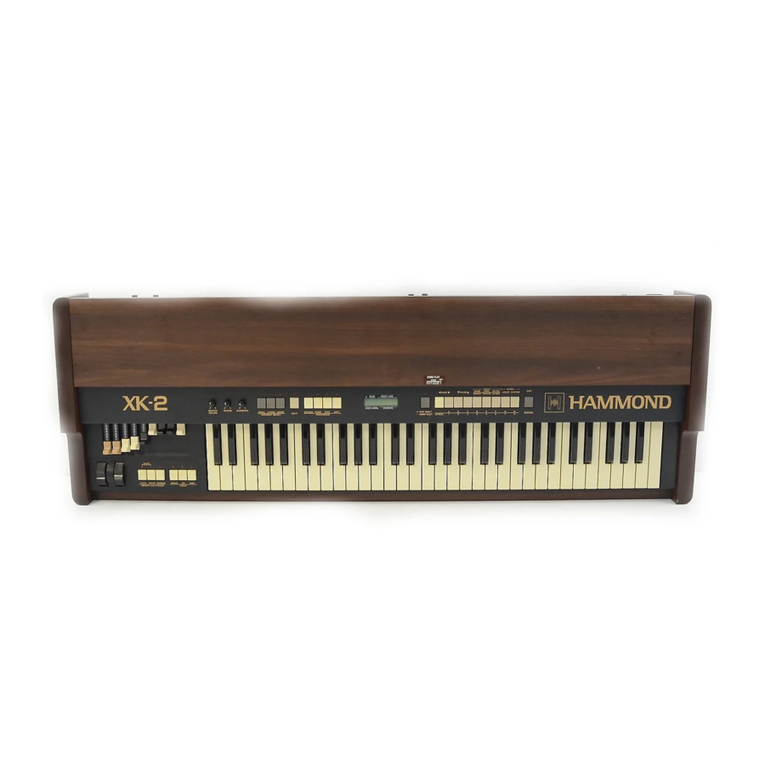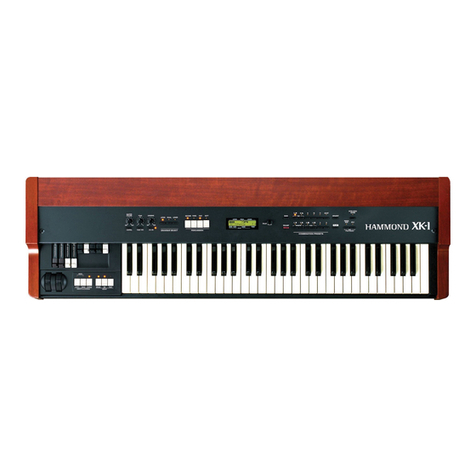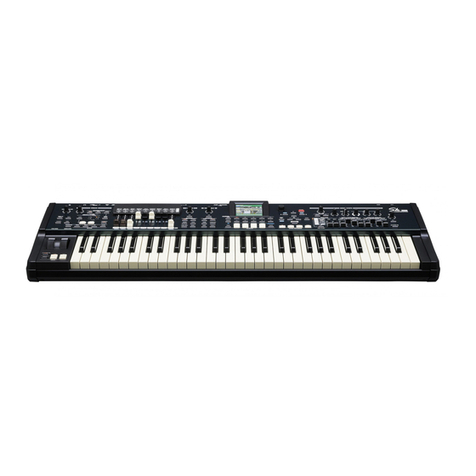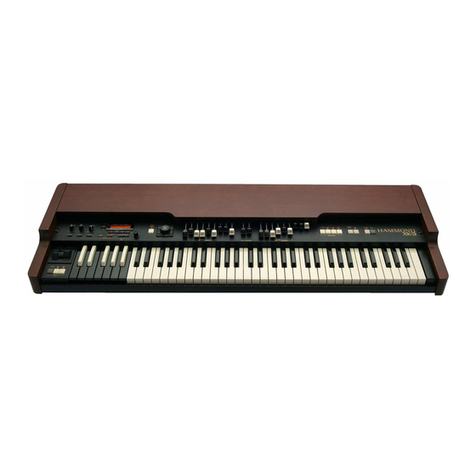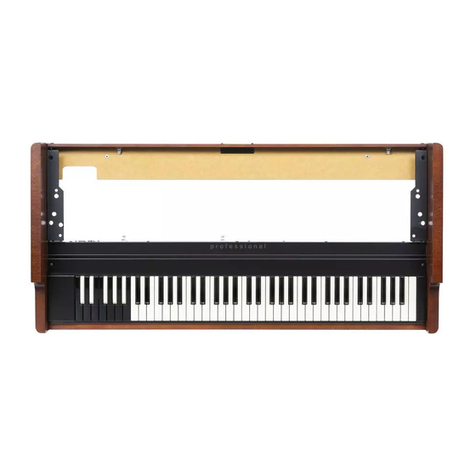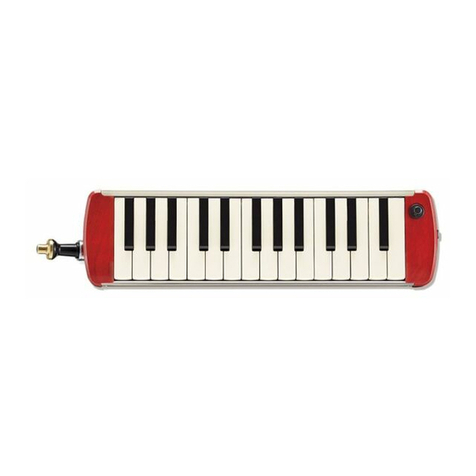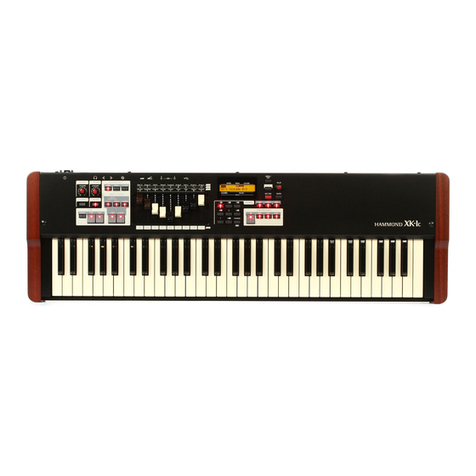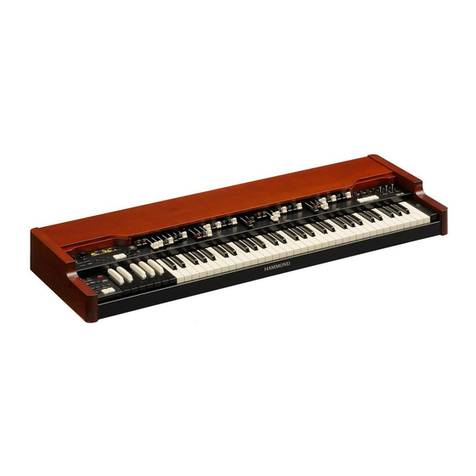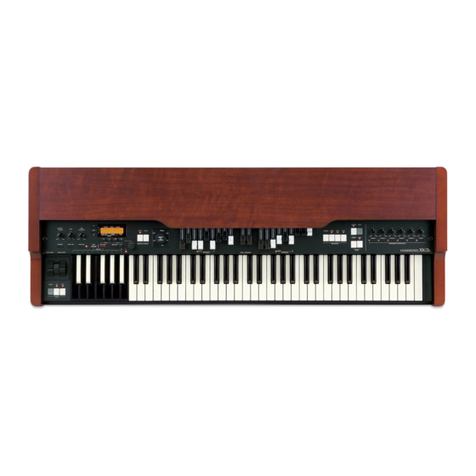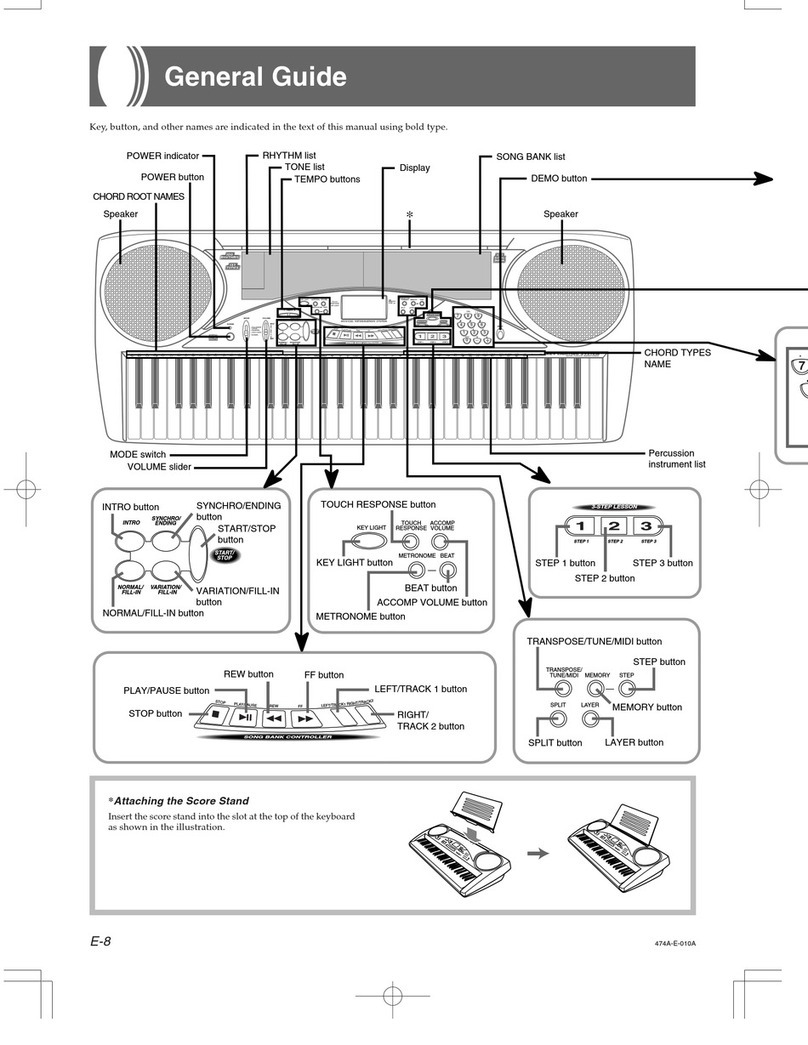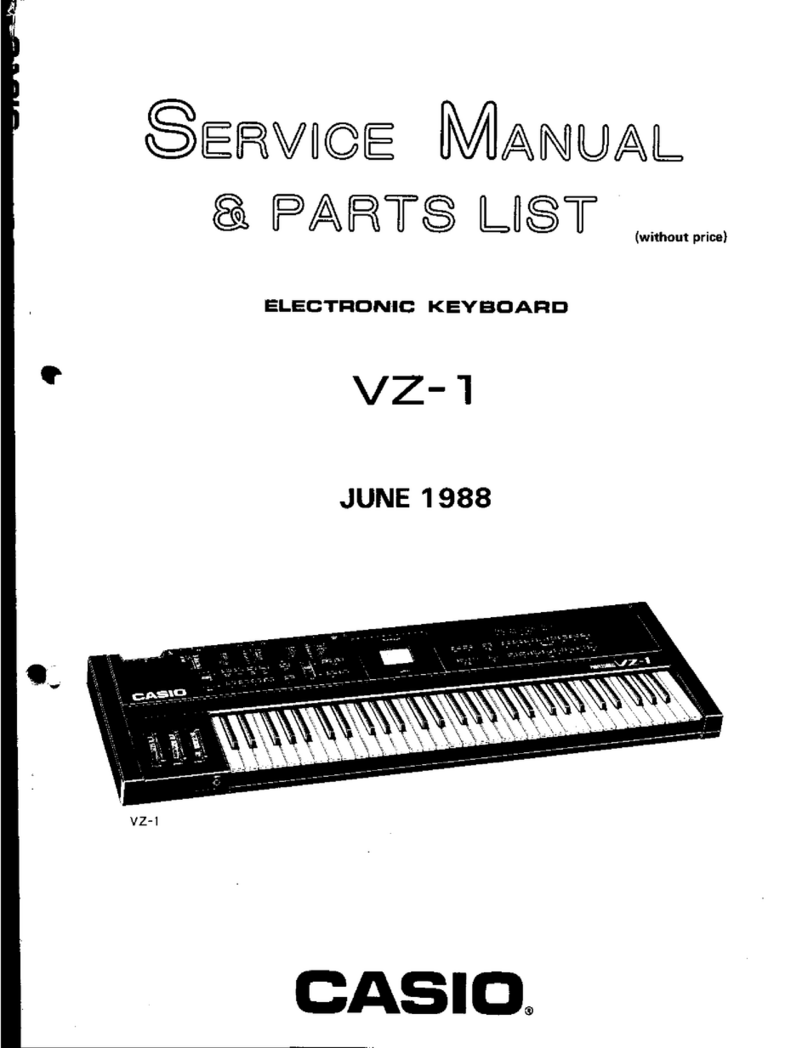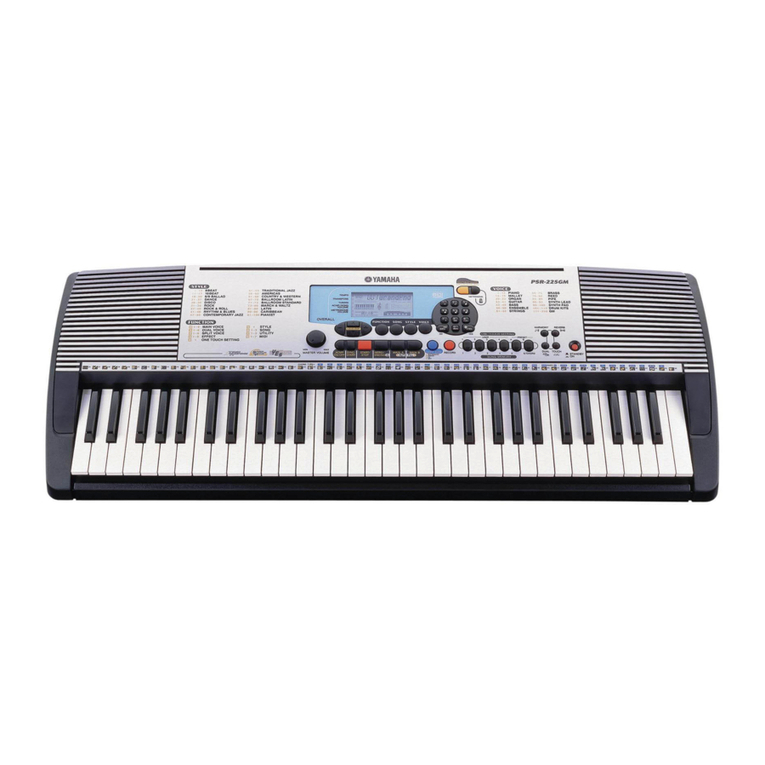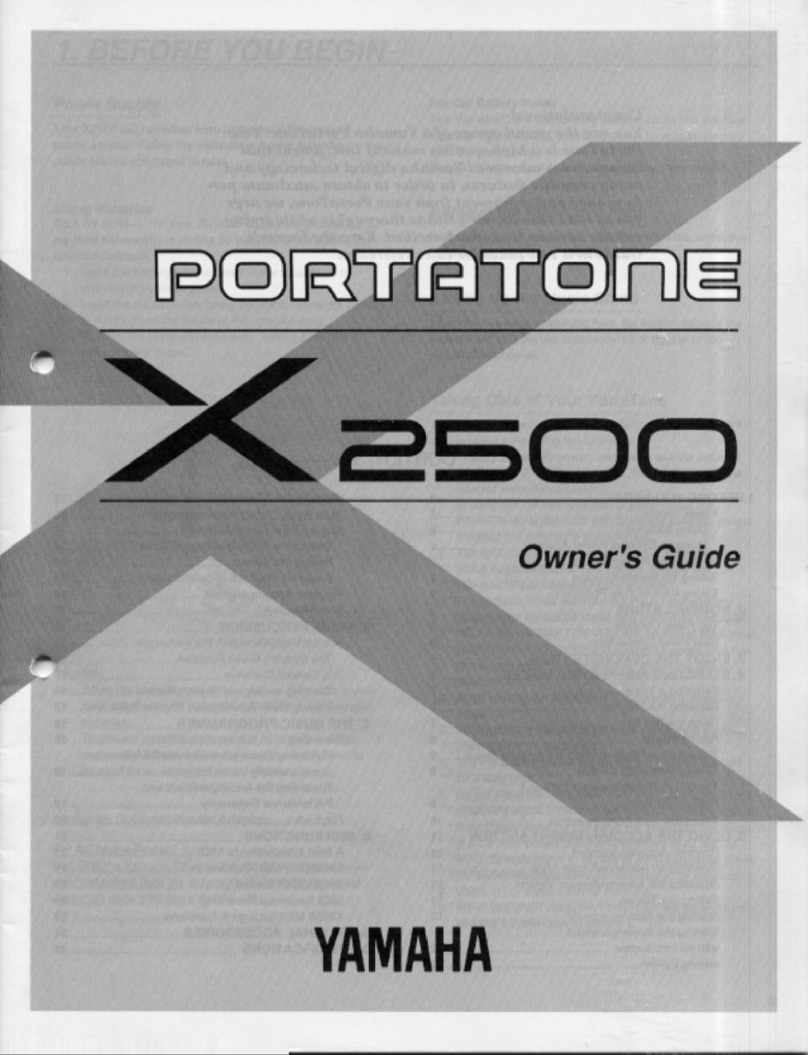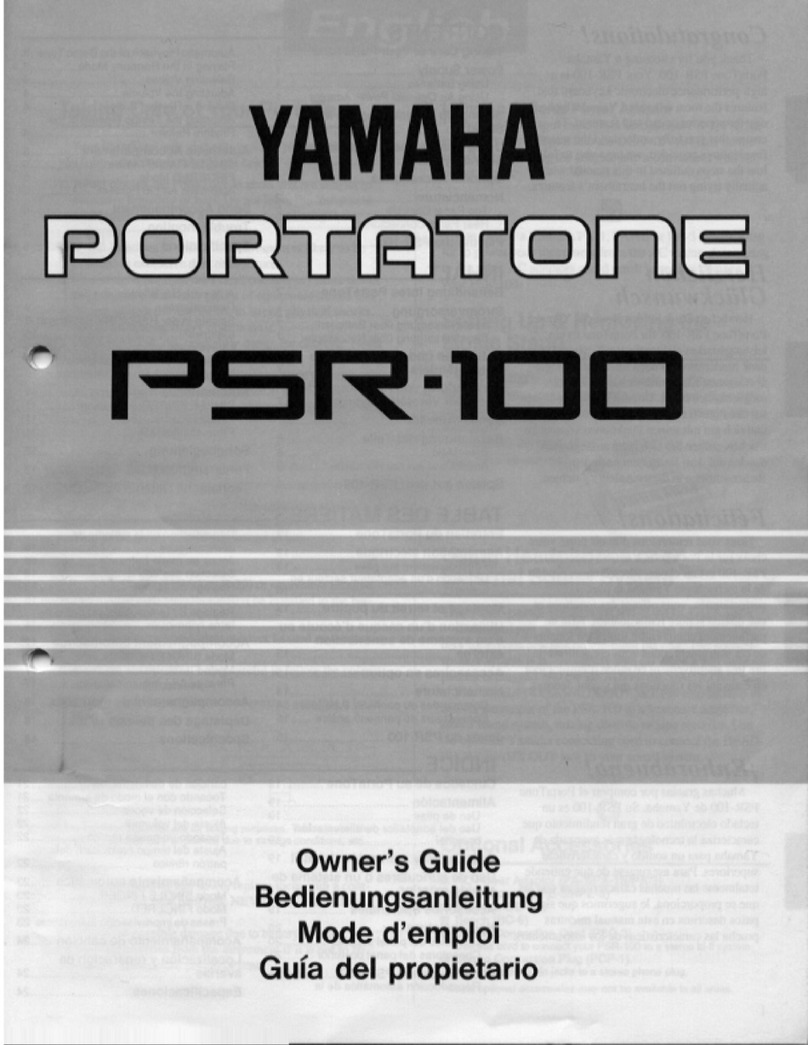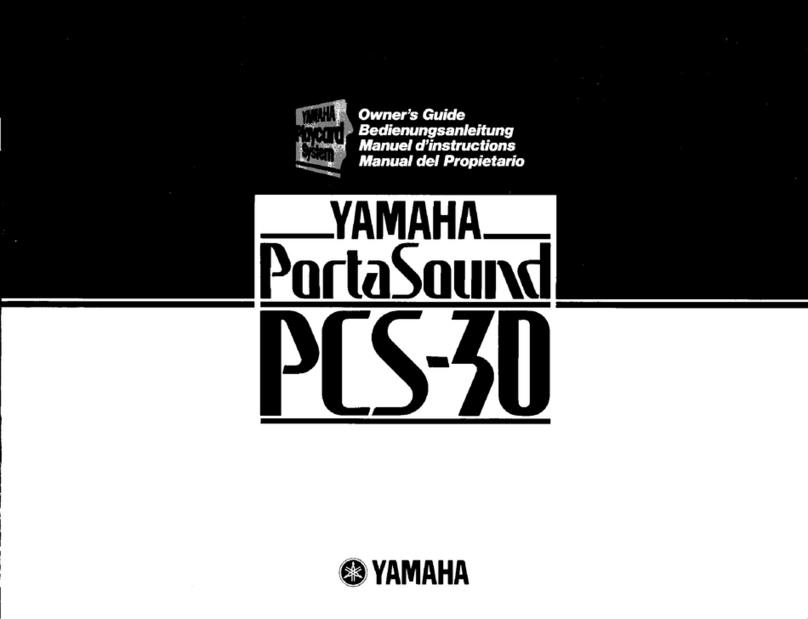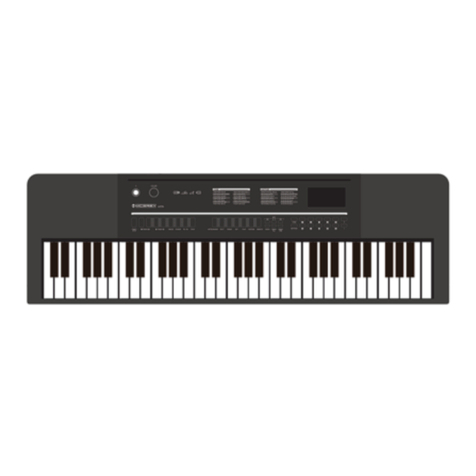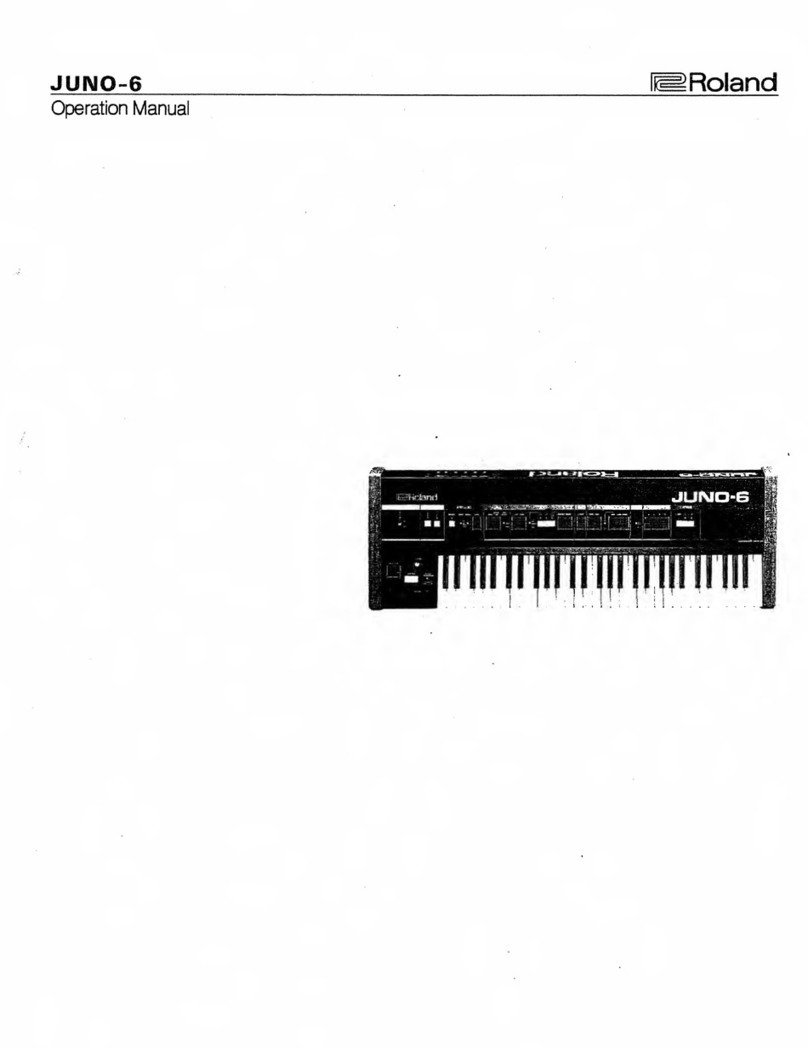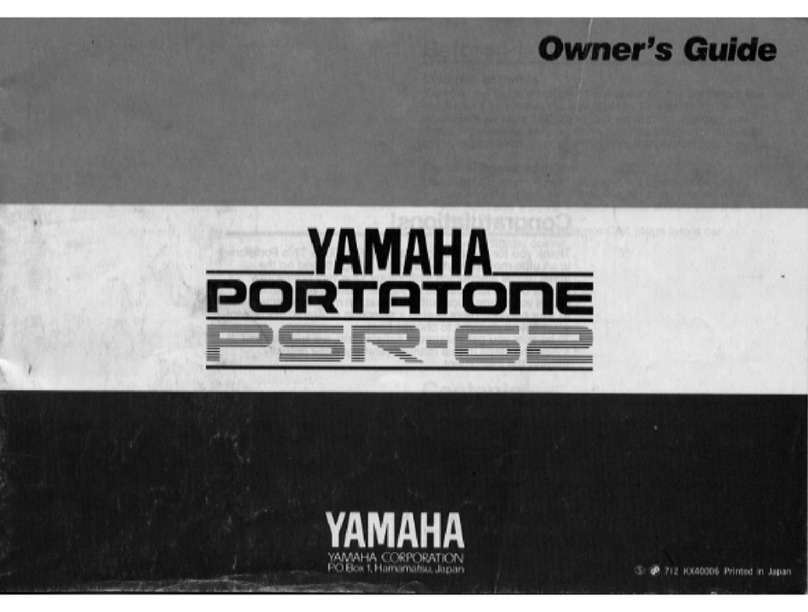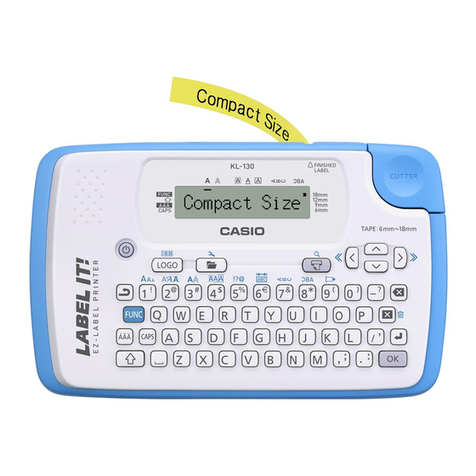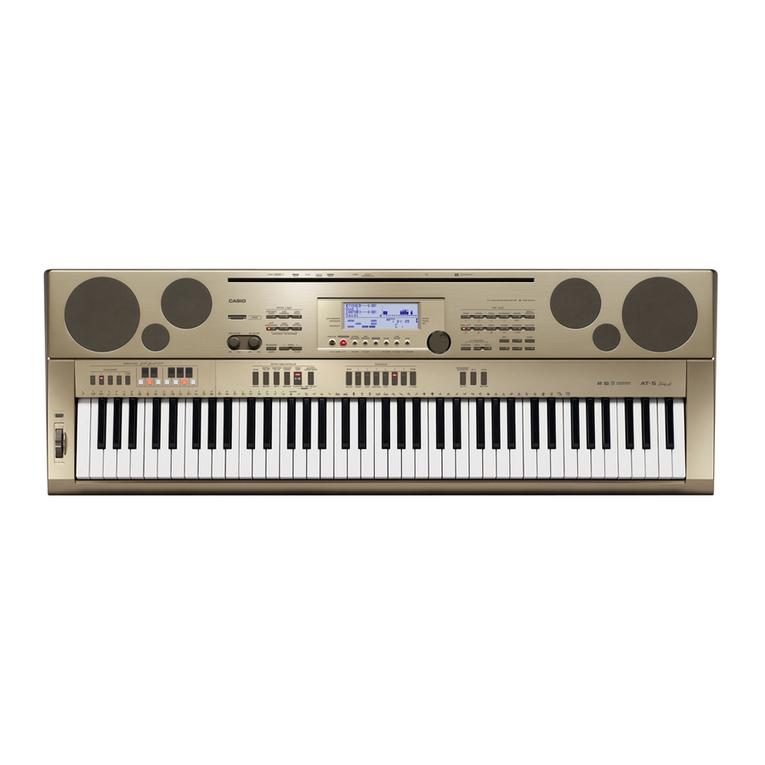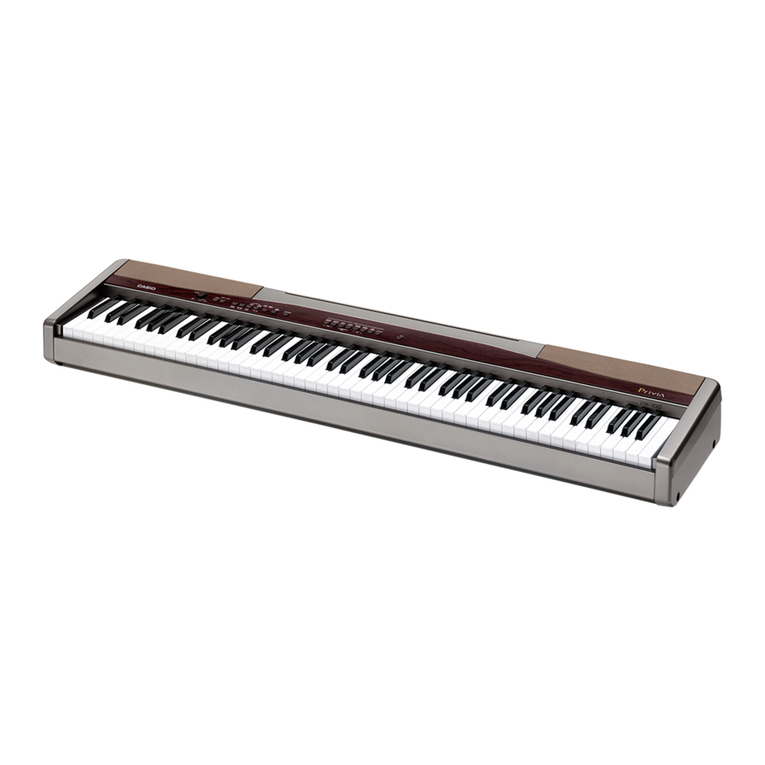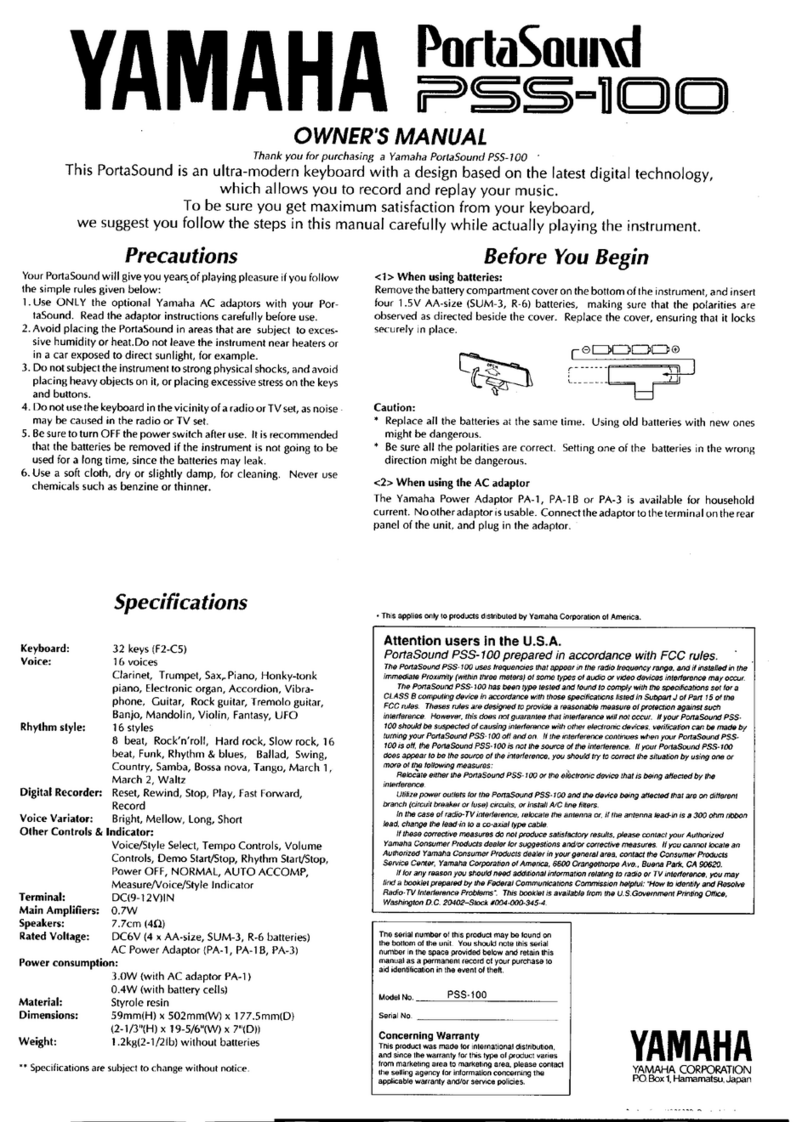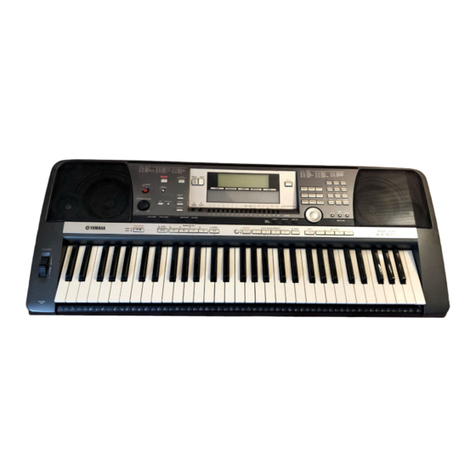
Special Performance Features
5
Foot Switch Functions
There are 16 settings for the Foot Switch Menu. The data chart below explains each one.
Foot Switch Options
Description Function
OFF Pressing the Foot Switch will have no effect.
LESLIE S/F ALT Allows you to use the Foot Switch to switch back and forth between Leslie Slow and Fast
Rotor Speeds. Each time the Foot Switch is pressed and released, the Leslie Rotors will
change speeds.
LESLIE S/F MOM Allows you to use the Foot Switch to switch Leslie Rotor Speeds. W hen the Foot Switch is
pressed and held, the Leslie Rotors will go at Fast speed. When the Foot Switch is not
engaged, the Leslie Rotors go at Slow speed.
LESLIE S/F TRI Allows you to use the Foot Switch to switch back and forth between Leslie Slow and Fast
Rotor Speeds similar to the ALT mode. Additionally, if the Foot Switch is pressed and held
for longer than 1 second, the Leslie Rotors will go to the Off or Stop position.
*GLIDE Allows you to use the Foot Switch to bend the pitch.
PATCH FWD Allows you to use the Foot Switch to move forward through the Patches.
PATCH REV Allows you to use the Foot Switch to move backward through the Patches.
FAVORITE FWD Allows you to use the Foot Switch to move forward through the Favorites.
FAVORITE REV Allows you to use the Foot Switch to move backward through the Favorites.
SPRING Allows you to use the Foot Switch to add the sound of a Spring Reverb unit being jostled.
+DELAY TIME Allows you to use the Foot Switch to add the Delay effect.
MUSIC START Allows you to use the Foot Switch to start or stop the Music Player.
MANUAL BASS Allows you to use the Foot Switch to triggers a Manual Bass note.
BASS 1C ~ BASS 3C Allows you to use the Foot Switch to play a specific Pedal note.
P.CHORD CLOSE Allows you to add ProChord harmony (closed voicing) to the organ section.
P.CHORD OPEN Allows you to add ProChord harm ony (open voicing) to the organ section.
* - You can adjust the parameters of the Glide function by accessing the GLIDE Page of the EFFECTS
Advanced Feature Menu. This is explained in the OVERALL EFFECTS section of this Guide.
+ - You can adjust the parameters of the Delay effect by accessing the Delay portion of the EFFECTS
Advanced Feature Menu. This is explained in the OVERALL EFFECTS section of this Guide.
All of the above functions can be set for either Tip or Ring Mode. However, Ring Mode will have no effect if only one
Foot Switch is connected to the FOOT SW jack. You can then use Tip Mode to select the function you want.
As explained on the previous page, a Stereo Adaptor must be plugged into the FOOT SW jack in order to use a Foot
Switch in Ring Mode. The Foot Switch plugged into the Right receptacle will respond to functions set for Ring Mode.
NOTE: The plug-in receptacles on some commercially available adaptors may be marked TIP and RING for easier
identification. Follow these markings when setting up your Foot Switches.
NOTE: The polarity of the connected Foot Switch(es) is automatically detected when the power to the instrument
is turned “ON.” Therefore, be sure to connect Foot Switches when the power is “OFF.”
